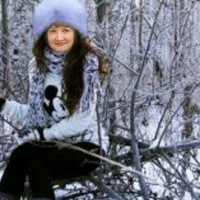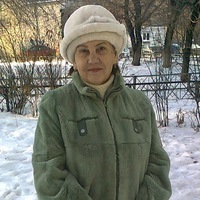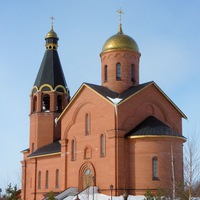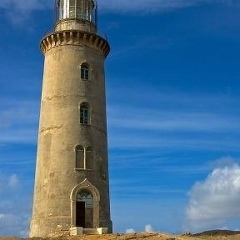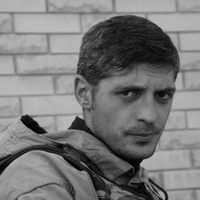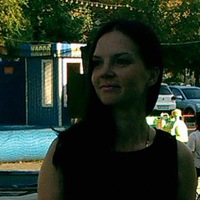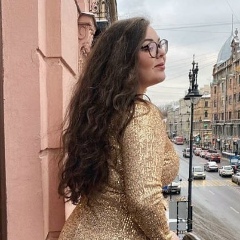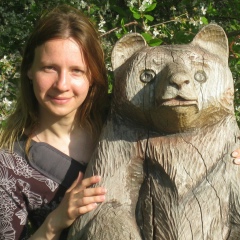ЦЕРКОВНАЯ ЖИЗНЬ В БЛОКАДНОМ ЛЕНИНГРАДЕ
Об этой стороне блокады Ленинграда написано очень много – и историками, и свидетелями. Например, о том, что митрополит Алексей Симанский (будущий Патриарх) был там с первого до последнего дня, хотя ему предлагали несколько раз эвакуироваться из города, или о том, как не останавливалась ежедневная служба в храмах, или о том, как служили не на пшеничных просфорах и вине, а на ржаных блокадных пайках и свекольном соке, или о том, что некоторые священники умирали от голода и болезней (всего погибло 18 священнослужителей из 30) – так же, как и многие прихожане (из 34 соборных певчих к февралю 1942 г. в хоре осталось 3 человека), или о том, что ВСЕ денежные доходы передавались в фонд обороны…
Вчитаемся в некоторые свидетельства:
«Отец наш, Владимир Антонович (Дубровицкий, протоиерей), был человек мягкий, но мужественный. Всю войну не было дня, чтобы отец не пошел на свою работу… Бывало, качается от голода, я плачу, умоляю его остаться дома, боюсь упадет, замерзнет где-нибудь в сугробе, а он в ответ: „Не имею я права слабеть, доченька. Надо идти, дух в людях поднимать, утешать в горе, укрепить, ободрить“. И шел в свой собор. За всю блокаду обстрел ли, бомбежка ли — ни одной службы не пропустил. Помню, выйду его проводить, смотрю, как снег в спину бьет, ветер рясу раздувает, вот-вот с ног свалит, и понять не могу, на чем он держится – ведь последний кусок мне отдавал…»
Показания на Нюрнбергском процессе протоиерея Николая Ломакина:
«7 февраля, в день Родительской субботы, перед началом Великого поста, я впервые после болезни пришёл в храм, и открывшаяся моим глазам картина ошеломила меня – храм был окружён грудами тел, частично даже заслонившими вход в храм. Эти груды достигали от 30 до 100 человек. Они были не только у входа в храм, но и вокруг храма. Я был свидетелем, как люди, обессиленные голодом, желая доставить умерших к кладбищу для погребения, не могли этого сделать и сами обессиленные падали у праха почивших и тут же умирали. Эти картины приходилось наблюдать очень часто»
«Следует упомянуть, что, несмотря на запрещение в 1930-е гг. колокольного звона, в Серафимовской церкви колокола уцелели, и в начале войны они по старому обычаю были спущены с колокольни «под спуд». Прихожане разобрали пол и потолок, вырыли глубокие ямы и осторожно с молитвой схоронили колокола. А через два с половиной года – утром 27 января 1944 г. радостное известие о снятии блокады собрало у храма обессиленных людей, которые в едином стихийном порыве сняли перекрытия, раздолбили мерзлую землю, достали и подняли колокола. Без всякого разрешения властей в Серафимовской церкви зазвонили в день прорыва блокады ровно в 16 часов. Люди сменяли друг друга, и звон колоколов не умолкал больше суток».
Многие вспоминают про то, что несколько действующих храмов Ленинграда были забиты молящимися, что власти не препятствовали многочисленным крестным ходам, что записки о здравии и упокоении исчислялись килограммами.
Протоиерей Владимир Вигилянский
#БлокадаЛенинграда
Об этой стороне блокады Ленинграда написано очень много – и историками, и свидетелями. Например, о том, что митрополит Алексей Симанский (будущий Патриарх) был там с первого до последнего дня, хотя ему предлагали несколько раз эвакуироваться из города, или о том, как не останавливалась ежедневная служба в храмах, или о том, как служили не на пшеничных просфорах и вине, а на ржаных блокадных пайках и свекольном соке, или о том, что некоторые священники умирали от голода и болезней (всего погибло 18 священнослужителей из 30) – так же, как и многие прихожане (из 34 соборных певчих к февралю 1942 г. в хоре осталось 3 человека), или о том, что ВСЕ денежные доходы передавались в фонд обороны…
Вчитаемся в некоторые свидетельства:
«Отец наш, Владимир Антонович (Дубровицкий, протоиерей), был человек мягкий, но мужественный. Всю войну не было дня, чтобы отец не пошел на свою работу… Бывало, качается от голода, я плачу, умоляю его остаться дома, боюсь упадет, замерзнет где-нибудь в сугробе, а он в ответ: „Не имею я права слабеть, доченька. Надо идти, дух в людях поднимать, утешать в горе, укрепить, ободрить“. И шел в свой собор. За всю блокаду обстрел ли, бомбежка ли — ни одной службы не пропустил. Помню, выйду его проводить, смотрю, как снег в спину бьет, ветер рясу раздувает, вот-вот с ног свалит, и понять не могу, на чем он держится – ведь последний кусок мне отдавал…»
Показания на Нюрнбергском процессе протоиерея Николая Ломакина:
«7 февраля, в день Родительской субботы, перед началом Великого поста, я впервые после болезни пришёл в храм, и открывшаяся моим глазам картина ошеломила меня – храм был окружён грудами тел, частично даже заслонившими вход в храм. Эти груды достигали от 30 до 100 человек. Они были не только у входа в храм, но и вокруг храма. Я был свидетелем, как люди, обессиленные голодом, желая доставить умерших к кладбищу для погребения, не могли этого сделать и сами обессиленные падали у праха почивших и тут же умирали. Эти картины приходилось наблюдать очень часто»
«Следует упомянуть, что, несмотря на запрещение в 1930-е гг. колокольного звона, в Серафимовской церкви колокола уцелели, и в начале войны они по старому обычаю были спущены с колокольни «под спуд». Прихожане разобрали пол и потолок, вырыли глубокие ямы и осторожно с молитвой схоронили колокола. А через два с половиной года – утром 27 января 1944 г. радостное известие о снятии блокады собрало у храма обессиленных людей, которые в едином стихийном порыве сняли перекрытия, раздолбили мерзлую землю, достали и подняли колокола. Без всякого разрешения властей в Серафимовской церкви зазвонили в день прорыва блокады ровно в 16 часов. Люди сменяли друг друга, и звон колоколов не умолкал больше суток».
Многие вспоминают про то, что несколько действующих храмов Ленинграда были забиты молящимися, что власти не препятствовали многочисленным крестным ходам, что записки о здравии и упокоении исчислялись килограммами.
Протоиерей Владимир Вигилянский
#БлокадаЛенинграда
CHURCH LIFE IN BLOCADED LENINGRAD
Much has been written about this side of the blockade of Leningrad, both by historians and by witnesses. For example, that Metropolitan Alexei Simansky (the future Patriarch) was there from the first to the last day, although he was offered several times to be evacuated from the city, or about how the daily service in the temples did not stop, or about how they served not on wheat prosphora and wine, and rye blockade rations and beetroot juice, or that some priests were dying of hunger and disease (18 priests out of 30 died) - just like many parishioners (of the 34 congregational singers by February 1942 the choir left 3 people), or that the sun E money incomes were transferred to the defense fund ...
Read some of the evidence:
“Our father, Vladimir Antonovich (Dubrovitsky, archpriest), was a gentle man, but courageous. There was no day during the war so that my father would not go to his work ... Sometimes, he swings from hunger, I cry, I beg him to stay at home, I'm afraid he will fall, freeze somewhere in a snowdrift, and he replied: “I have no right to weaken, daughter It is necessary to go, to raise the spirit in people, to console in grief, to strengthen, to encourage. " And he went to his cathedral. For the entire blockade, shelling, bombing, or not a single service did not miss. I remember going out to spend it, I watch the snow in my back beating, the wind blows my cassock, is about to fall down my feet, and I can’t understand what it is holding on - after all, I gave the last piece to me ... ”
Indications on the Nuremberg trial of Archpriest Nikolai Lomakin:
“On February 7, on the day of Parent's Saturday, before the beginning of Lent, I came to the temple for the first time after an illness, and the picture that opened to my eyes stunned me — the temple was surrounded by piles of bodies that partially even blocked the entrance to the temple. These piles reached from 30 to 100 people. They were not only at the entrance to the temple, but also around the temple. I witnessed how people exhausted by hunger, wanting to deliver the dead to the cemetery for burial, could not do this, and the weakened themselves fell at the remains of the deceased and died immediately. These pictures had to be seen very often. ”
“It should be mentioned that despite the ban in the 1930s the bell ringing, in the Seraphim church the bells survived, and at the beginning of the war, according to the old custom, they were lowered from the bell tower “under a flood”. The parishioners dismantled the floor and ceiling, dug deep holes and carefully buried the bells with prayer. Two and a half years later, on the morning of January 27, 1944, the joyful news of the lifting of the blockade gathered around the temple exhausted people who, in a single spontaneous outburst, removed the ceilings, broke the frozen ground, took out and raised the bells. Without any permission from the authorities, the Seraphim Church rang on the day of the blockade breaking at exactly 16:00. People succeeded each other, and the bells did not fall silent for more than a day. ”
Many recall the fact that several operating churches in Leningrad were clogged up in prayers, that the authorities did not interfere with numerous religious processions, that the notes about health and repose were calculated in kilograms.
Archpriest Vladimir Vigilyansky
#Leningrad blockade
Much has been written about this side of the blockade of Leningrad, both by historians and by witnesses. For example, that Metropolitan Alexei Simansky (the future Patriarch) was there from the first to the last day, although he was offered several times to be evacuated from the city, or about how the daily service in the temples did not stop, or about how they served not on wheat prosphora and wine, and rye blockade rations and beetroot juice, or that some priests were dying of hunger and disease (18 priests out of 30 died) - just like many parishioners (of the 34 congregational singers by February 1942 the choir left 3 people), or that the sun E money incomes were transferred to the defense fund ...
Read some of the evidence:
“Our father, Vladimir Antonovich (Dubrovitsky, archpriest), was a gentle man, but courageous. There was no day during the war so that my father would not go to his work ... Sometimes, he swings from hunger, I cry, I beg him to stay at home, I'm afraid he will fall, freeze somewhere in a snowdrift, and he replied: “I have no right to weaken, daughter It is necessary to go, to raise the spirit in people, to console in grief, to strengthen, to encourage. " And he went to his cathedral. For the entire blockade, shelling, bombing, or not a single service did not miss. I remember going out to spend it, I watch the snow in my back beating, the wind blows my cassock, is about to fall down my feet, and I can’t understand what it is holding on - after all, I gave the last piece to me ... ”
Indications on the Nuremberg trial of Archpriest Nikolai Lomakin:
“On February 7, on the day of Parent's Saturday, before the beginning of Lent, I came to the temple for the first time after an illness, and the picture that opened to my eyes stunned me — the temple was surrounded by piles of bodies that partially even blocked the entrance to the temple. These piles reached from 30 to 100 people. They were not only at the entrance to the temple, but also around the temple. I witnessed how people exhausted by hunger, wanting to deliver the dead to the cemetery for burial, could not do this, and the weakened themselves fell at the remains of the deceased and died immediately. These pictures had to be seen very often. ”
“It should be mentioned that despite the ban in the 1930s the bell ringing, in the Seraphim church the bells survived, and at the beginning of the war, according to the old custom, they were lowered from the bell tower “under a flood”. The parishioners dismantled the floor and ceiling, dug deep holes and carefully buried the bells with prayer. Two and a half years later, on the morning of January 27, 1944, the joyful news of the lifting of the blockade gathered around the temple exhausted people who, in a single spontaneous outburst, removed the ceilings, broke the frozen ground, took out and raised the bells. Without any permission from the authorities, the Seraphim Church rang on the day of the blockade breaking at exactly 16:00. People succeeded each other, and the bells did not fall silent for more than a day. ”
Many recall the fact that several operating churches in Leningrad were clogged up in prayers, that the authorities did not interfere with numerous religious processions, that the notes about health and repose were calculated in kilograms.
Archpriest Vladimir Vigilyansky
#Leningrad blockade
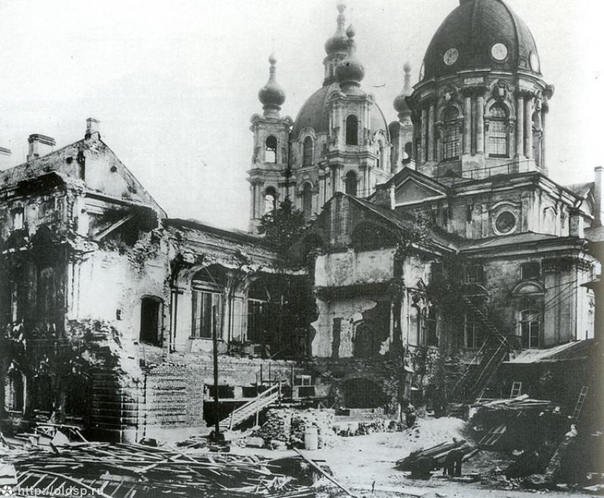

У записи 69 лайков,
12 репостов,
1580 просмотров.
12 репостов,
1580 просмотров.
Эту запись оставил(а) на своей стене Владимир Панарин


























